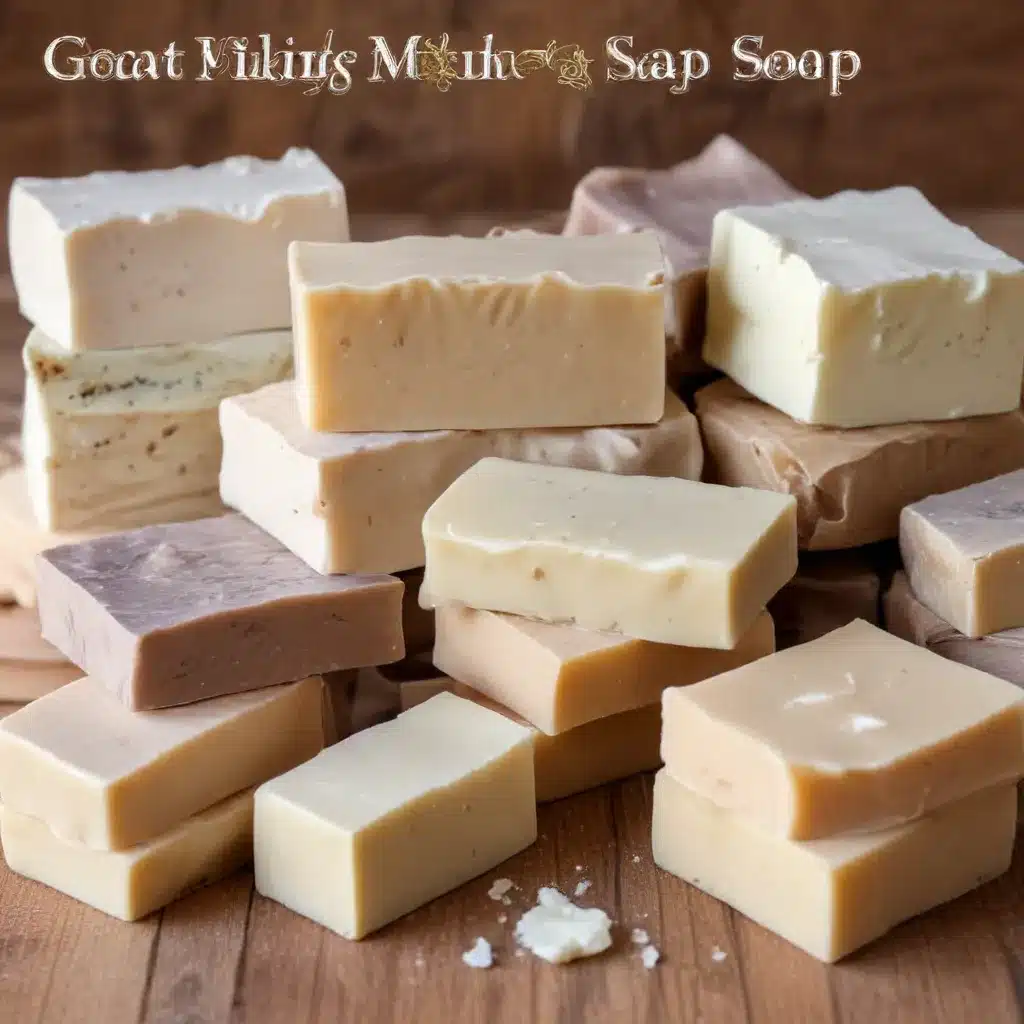
Homemade soap has grown increasingly popular in recent years as more people seek natural self-care products. One category that has particularly surged in demand is goat milk soap. With its gentle, nourishing properties and creamy lather, goat milk soap has become a staple for many families, especially those with sensitive skin.
As a farm educator at Crooked Pines Farm, I’ve learned firsthand the joys of making goat milk soap using ingredients straight from our pastures. Crafting soap with farm-fresh goat milk is an incredibly rewarding process, allowing you to create a truly unique and luxurious product. In this article, I’ll share my insights on the benefits of goat milk soap, walk you through the soap-making process, and provide tips for customizing your own batches.
The Benefits of Goat Milk Soap
Goat milk is an exceptional ingredient for handmade soap due to its rich, skin-nourishing properties. Compared to commercially produced soaps, which often contain harsh detergents that strip the skin of its natural oils, goat milk soap is gentle, creamy, and hydrating.
The high fat content in goat milk, particularly caprylic acid, aids in the removal of dirt and impurities without drying out the skin. Goat milk also contains beneficial vitamins and minerals, such as selenium, vitamin A, and cholesterol, which help maintain the skin’s natural protective barrier.
Additionally, the lactic acid in goat milk acts as a natural exfoliant, sloughing away dead skin cells and revealing a brighter, more radiant complexion. This makes goat milk soap an excellent choice for those dealing with skin conditions like eczema, psoriasis, or acne.
Sourcing the Freshest Goat Milk
When making goat milk soap, it’s crucial to use the highest-quality, freshest milk available. Reach out to local farms, farmers’ markets, or even consider keeping your own small herd of goats. The composition and flavor of the milk can vary depending on the breed, diet, and health of the goats, so experiment to find the perfect match for your soap-making needs.
Remember to handle the milk with care, as raw goat milk is perishable. Freeze the milk in measured cubes or portions to use in your soap batches. This not only preserves the milk’s integrity but also helps prevent it from scorching during the saponification process.
Crafting Soap with Farm-Fresh Ingredients
There are several methods for making goat milk soap, each with its own unique benefits. The cold process technique, which I prefer, allows you to use fresh goat milk while maintaining its nourishing properties. This process involves combining the milk with lye to create the soap, then pouring the mixture into molds to cure.
To begin, gather your supplies: a digital scale, heat-safe containers, a stick blender, and, of course, your farm-fresh goat milk. Measure the milk and lye carefully, as the ratios are crucial for a successful batch. Slowly incorporate the lye into the frozen milk, taking care to monitor the temperature and prevent overheating.
Meanwhile, melt your oils, such as coconut oil, olive oil, and shea butter, in a separate container. Once the lye-milk solution and oils are within 10 degrees of each other, combine them using the stick blender until the mixture reaches “trace” – a thick, pudding-like consistency.
At this stage, you can add any desired natural colorants, essential oils, or botanicals to customize your soap. Carefully pour the mixture into molds, chill the soap in the refrigerator, and allow it to cure for four to six weeks before use.
Customizing Your Goat Milk Soap
One of the joys of making your own soap is the ability to tailor it to your unique preferences and needs. Experiment with natural colorants like clays, activated charcoal, or dried herbs and flowers to create visually stunning bars.
Essential oils are also a fantastic way to infuse your soap with soothing, skin-beneficial aromas. Lavender, chamomile, and peppermint are all excellent choices, but feel free to explore various blends and scent combinations.
For an extra exfoliating boost, you can incorporate ground oats, coffee grounds, or poppy seeds into your soap batter. These natural additions provide a gentle scrubbing effect while nourishing the skin.
Molding and Shaping Your Soap
When it comes to the physical form of your goat milk soap, the options are endless. Silicone molds in a variety of shapes and sizes allow you to create uniquely shaped bars, while wooden loaf molds produce classic rectangular bars that can be cut to size.
For an extra touch of whimsy, consider embedding small items like dried flowers, seashells, or river stones into the soap surface. Just be mindful of any potential skin sensitivities when using inclusions.
Once your soap has fully cured, you can experiment with different cutting techniques to achieve your desired aesthetic. A simple loaf can be sliced into bars, or you can use wire cutters or specialty soap-cutting tools to create intricate designs.
Sharing the Bounty of the Farm
Handcrafted goat milk soap makes for a wonderful gift, whether you’re sharing it with friends, family, or your community. Package your beautifully crafted bars in eco-friendly wrappings, such as muslin bags or recycled paper, and consider adding a personalized touch, like a hand-stamped label or a sprig of dried lavender.
As you embark on your goat milk soap-making journey, embrace the the farm-to-table ethos that is at the heart of Crooked Pines Farm. Infuse each batch with the love, care, and connection to the land that comes from working with nature’s bounty. Your soap will not only nourish the skin, but also reflect the spirit of the farm that inspired its creation.


